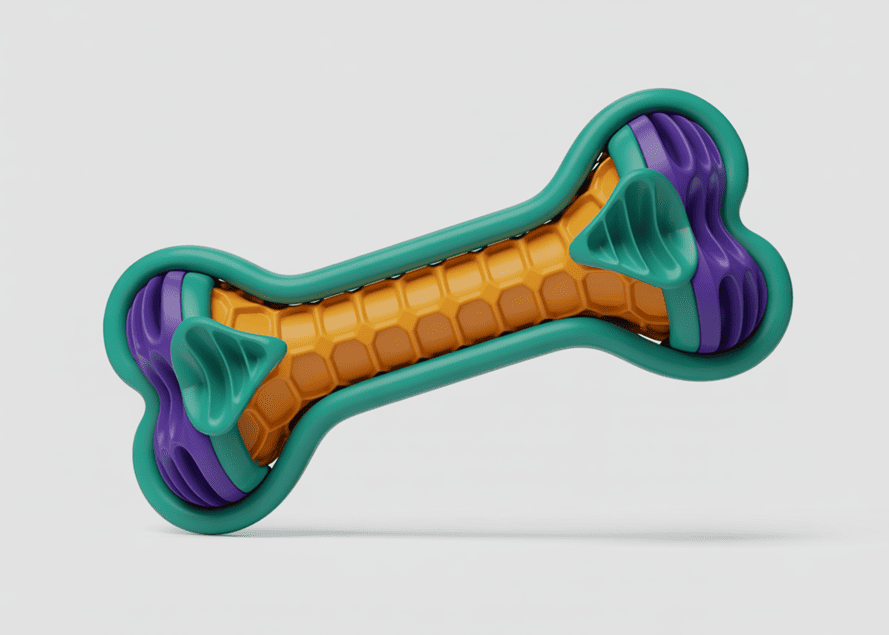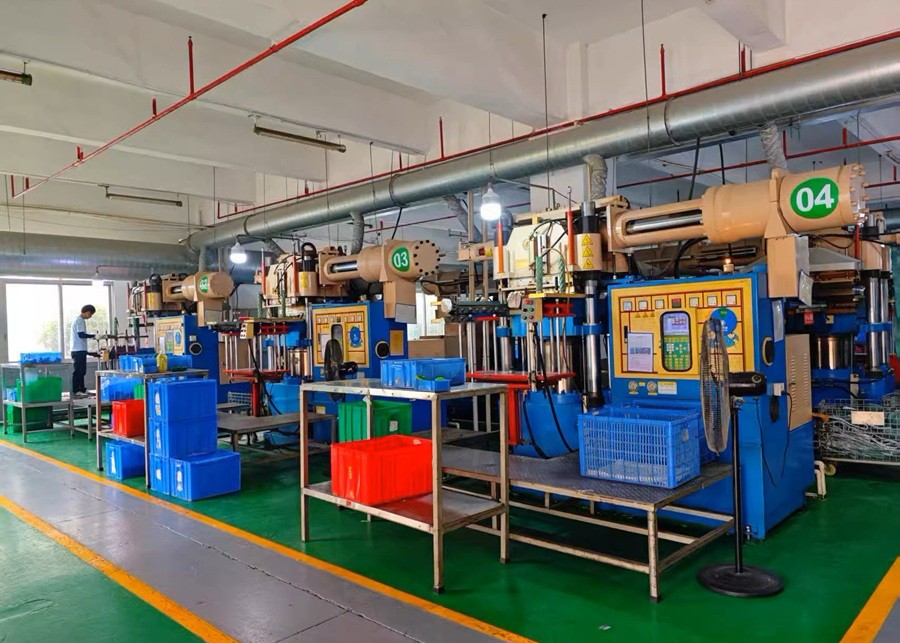This is not for the average dog owner. This is a deep dive for brand owners, purchasing managers, and business leaders. You need to know how things are actually made.
Your business success depends on sourcing durable, safe, and profitable products. This guide reveals the entire process, from material science to production realities, helping you make smarter purchasing decisions and build a brand that dog owners trust.
This article is my attempt to give you a transparent, behind-the-scenes look. I believe that when you, as a B2B buyer, understand the manufacturing process, you can ask better questions, negotiate better terms, and ultimately, build a stronger product line. As a manufacturer with over a decade of experience, I’ve seen what works and what doesn’t. We’ve moved beyond just making "products"; we focus on creating "solutions" that align with your business goals. Let’s walk through this journey together, from the science of a dog’s chew to the economics of a production run.
What is the science behind why dogs like chew toys?
Struggling to connect a dog’s natural behavior to a profitable product line? You see dogs chewing, but turning that observation into a marketable product strategy can feel like guesswork.
Dogs chew to explore, relieve stress, and maintain dental health. For B2B buyers, understanding these core needs is the key to developing targeted, successful product lines. This isn’t just animal behavior; it’s a market demand analysis that informs smart product development.

As a brand owner, you need to think about how these scientific reasons translate into commercial opportunities. I don’t see a dog chewing; I see market segments. We can break down these needs and align them with specific product strategies. This turns basic science into business insight.
From Instinct to Product Line
- Teething and Dental Health: Puppies chew to relieve the pain of new teeth coming in. Adult dogs chew to clean their teeth and strengthen their jaws. This is your opportunity to create a "Puppy Line" with softer, more forgiving materials, or a "Dental Health" series with specific textures designed to scrape away tartar.
- Anxiety and Boredom: Many dogs, especially when left alone, suffer from separation anxiety. Chewing is a self-soothing behavior. This insight is the foundation for an "Anxiety-Relief" product line. These toys are often designed to be filled with treats, providing long-lasting mental stimulation and comfort.
- Energy Outlet: For high-energy breeds, chewing is a way to burn off excess energy and prevent destructive behavior around the house. This points directly to the need for an "Extreme Chewer" or "Power Chewer" line, made from the most durable materials available.
Understanding this science allows us to partner with you not just to make a toy, but to craft a solution that meets a specific consumer need.
Is Any Dog Toy Truly "Indestructible"?
You’re under pressure to market your toys as "tough" or "indestructible." But you worry about customer complaints and the potential danger if a toy fails catastrophically.
No, and any responsible manufacturer will tell you that. The goal isn’t to create a toy that never breaks. The goal is to design a toy that, if it does fail under extreme force, fails in a safe way. This concept is called "Safe Failure."

The pursuit of absolute indestructibility is a myth. The reality is that a dog with enough power, time, and determination can destroy almost anything. Low-quality toys fail dangerously; they can shatter into sharp pieces that pose a choking or internal injury risk. Our philosophy is different. We engineer for "Safe Failure." This means when one of our high-quality toys reaches its breaking point, it’s designed to crumble into small, harmless bits or tear without creating sharp edges. For your brand, this is a critical selling point. It shifts the conversation from an impossible promise ("indestructible") to a responsible guarantee ("designed for safety"). I once worked with a client who was terrified of this issue. We showed them how our rubber formula, when pushed past its limit in lab tests, simply tore, whereas a competitor’s product shattered like glass. This demonstration gave them the confidence to build their brand on safety and quality, not on an empty promise.
What are super chewer toys made of?
Choosing the right material feels overwhelming. You hear terms like TPR, nylon, and rubber, but you don’t know which is best for your product, your customer, and your budget.
Super chewer toys are primarily made from three materials: natural rubber, food-grade nylon, and thermoplastic rubber (TPR). Each has distinct properties, costs, and best-use cases. Your choice directly impacts the toy’s durability, safety, and price point.

Let’s break this down from a procurement perspective. Instead of just listing materials, I want to give you a decision-making tool. Think of this as a "Material Selection Matrix." This is how our product development team advises brand owners to help them make the most informed choice for their specific needs. For your profit margin, understanding these trade-offs is everything.
| Material | Durability Rating (1-5) | Cost Index | Best For… |
|---|---|---|---|
| Natural Rubber | ★★★★☆ | $$$ | Heavy-duty chew toys, bouncy toys, treat-dispensing toys. Offers a satisfying "give" that dogs love. |
| Food-Grade Nylon | ★★★★★ | $$ | Extreme chewers, dental chew toys. Incredibly hard and long-lasting, but less flexible. |
| TPR (Thermoplastic Rubber) | ★★★☆☆ | $ | Floating toys, puzzle toys, softer chew toys for moderate chewers. It’s versatile and cost-effective. |
The choice isn’t about which material is "best" overall, but which is right for the specific product you want to create. For example, the high tensile strength of quality nylon can be several times greater than that of ordinary plastics, making it ideal for an "Indestructible" product line. Natural rubber, while more expensive, provides a weight and chew-feel that signals "premium quality" to the end consumer.
What Are the Key Principles of Safe Chew Toy Design?
You know a safe toy can’t have small parts that break off. But what separates a truly well-engineered toy from a basic one? You need to show your customers that your designs are smarter.
Beyond the basics of non-toxic materials, superior design focuses on structural mechanics and canine ergonomics. It’s about how the toy distributes bite force and how its shape interacts with a dog’s mouth to ensure safety and satisfaction.

This is where our ODM (Original Design Manufacturer) capabilities truly shine. We don’t just think about what a toy looks like; we think about how it performs under pressure. This is our design philosophy, and it’s built on science and years of experience.
Here are the deeper principles we apply:
- Mechanical Structure Design: A solid block of material isn’t always the strongest design. We often use internal reinforcement ribs or carefully engineered hollow cores. These structures help to distribute the immense force of a dog’s bite across the entire toy, preventing stress from concentrating in one weak spot.
- Canine Oral Ergonomics: One size does not fit all. We consider the target dog breed. A toy for a Jack Russell should have a different shape and size than one for a German Shepherd. For instance, we recently developed a clover-shaped toy for a U.S. brand. Our initial analysis showed that the original design had lobes that could potentially get stuck in a large dog’s mouth. We used 3D modeling to adjust the curvature and spacing, ensuring a satisfying chew experience without the risk of it becoming a safety hazard. This level of detail demonstrates true expertise and builds brand trust.
What Are the Core Stages of Chew Toy Mass Production?
You’ve approved a design, but the factory floor is a black box. How can you be sure that the 10,000th unit will be the same quality as the first sample you approved?
Mass production follows a strict, multi-stage process: tooling (mold creation), material preparation, injection molding, cooling and finishing, and quality control. Each stage is a critical control point that ensures consistency and quality from the first unit to the last.

I want to take you on a "virtual factory tour" to demystify this process. Understanding these steps helps you appreciate why certain quality controls are so vital.
- Tooling (Mold Creation): We create a high-precision steel mold based on your approved 3D design.
- What This Means for You: The precision of this mold is everything. It dictates the final shape, texture, and consistency of every single toy. A good mold is a significant upfront investment in quality.
- Material Preparation: We mix the raw materials (like rubber or nylon) with any colorants, ensuring the formula is exact.
- What This Means for You: Precise mixing guarantees that the color and material properties are identical across the entire production run.
- Injection Molding: The prepared material is heated and injected into the steel mold under immense pressure.
- What This Means for You: We carefully control temperature and pressure. This precision ensures that each product has the same density and durability, eliminating quality fluctuations between batches.
- Cooling & Finishing: The toys are cooled to solidify properly, then removed from the molds. Excess material (called "flash") is trimmed by hand.
- What This Means for You: Proper cooling prevents warping. Meticulous trimming ensures a smooth, safe finish with no sharp edges.
- Final Quality Control: Each unit is inspected for defects, dimensions, and hardness before being packaged.
- What This Means for You: This is your final guarantee that the products shipping out meet the exact standards you approved.
How Do Tooling and Volume Directly Impact Final Unit Cost?
You need to balance your budget with your market goals. You’re unsure whether to place a small test order or a large volume order, and you don’t fully grasp how the mold cost affects the price.
Tooling is a one-time fixed cost for the mold. This cost is divided among the units in your order. Therefore, a higher order volume spreads that fixed cost more thinly, directly lowering the cost per unit.
I believe in being completely transparent about costs. Let’s act as your financial advisor for a moment and break this down with a simple, clear example. This is the most common conversation I have with new brand partners, and understanding it is key to a profitable relationship.
Let’s assume a new, custom-designed toy requires a mold (tooling) that costs $3,000.
-
Scenario A: Small Test Order
- Your initial order volume is 3,000 pieces.
- The tooling cost per unit is $3,000 / 3,000 units = $1.00 per unit.
-
Scenario B: Larger Volume Order
- Your initial order volume is 10,000 pieces.
- The tooling cost per unit is $3,000 / 10,000 units = $0.30 per unit.
Our Recommendation: The decision isn’t just about getting the lowest price. We work with you as a partner. Based on your market projections and budget, we can help you find the sweet spot. Sometimes, a slightly higher unit cost on a smaller initial order is the right strategic move to test the market. Once the product is proven, we can scale up production to bring your unit cost down significantly. This transparent, consultative approach eliminates surprises and helps you manage your cash flow effectively.
Conclusion
From understanding a dog’s needs to the economics of production, making a high-quality chew toy is a complex process. Partnering with an experienced manufacturer ensures your brand delivers safety, durability, and value.


